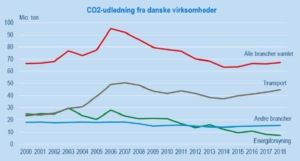News
Danish companies emitting more CO2 in recent years
This article is more than 5 years old.
Following several years of decline, emissions have increased slightly again since 2014

The happy colours can’t disguise Denmark’s poor standing (photo: Pixabay)
With Denmark setting its sights on ambitiously reducing its CO2 emissions by 70 percent by 2030, the business sector is expected to chip in like everyone else.
But according to new figures from the national stat keeper Danmarks Statistik, things have moved in the wrong direction in the past five years or so.
The numbers revealed that CO2 emissions from all sectors was at 67.3 million tonnes in 2018 – a 4 percent increase from the 63.5 million tonnes registered in 2014.
Transport has increased emissions over the past five years, while the energy supply has decreased.
“Transport, particularly international shipping, and energy supply are a key aspect of Danish company CO2 emissions,” said Ingeborg Vind, a consultant from Danmarks Statistik.
“The increased emissions in shipping is largely due to increased international maritime transport by Danish shipping firms. The falling emissions within energy supply is a consequence of switching to sustainable energy sources.”
READ ALSO: Maersk sets zero-emissions goal for 2050
Progress until 2014
Another sector that has contributed to increased CO2 emissions is the glass and concrete industry, according to Vind.
Other industries moving in the wrong direction include construction, waste treatment, agriculture, renovation, and mining and quarrying.
The increase in emissions comes after Denmark experienced a significant decrease in emissions from 2006 to 2014.











































